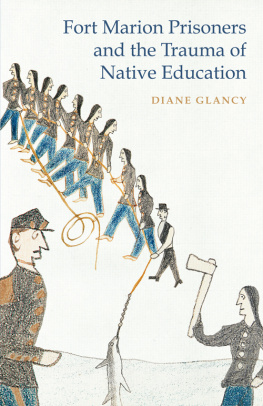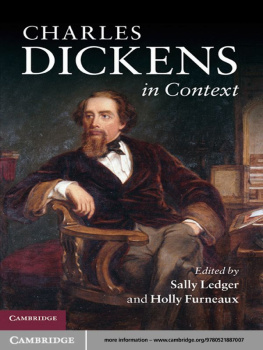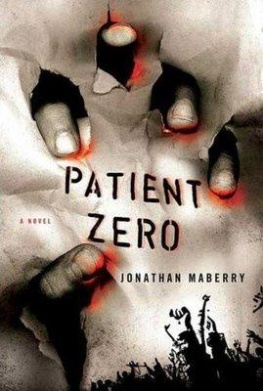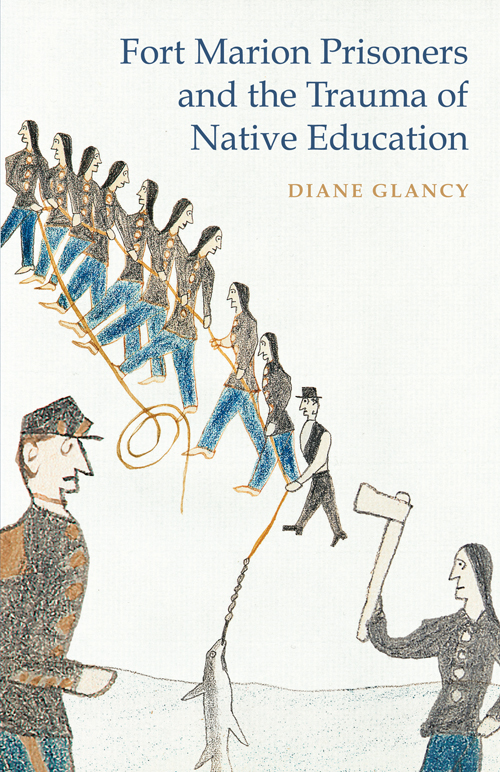
Diane Glancy inhabits a world of images that breathe life and voice for the voiceless men, women, and children.... No simple history lesson, this, as Glancy examines how language is both captor and savior, another means of imprisonment and also liberation.
Gina Ochsner, author of The Necessary Grace to Fall
This book is mesmerizing and will stay with you for lifetimes.
Jackie Old Coyote, Apsaalooke Nation, former director of education and outreach at the Harvard Project on American Indian Economic Development
Fort Marion Prisoners and the Trauma of Native Education
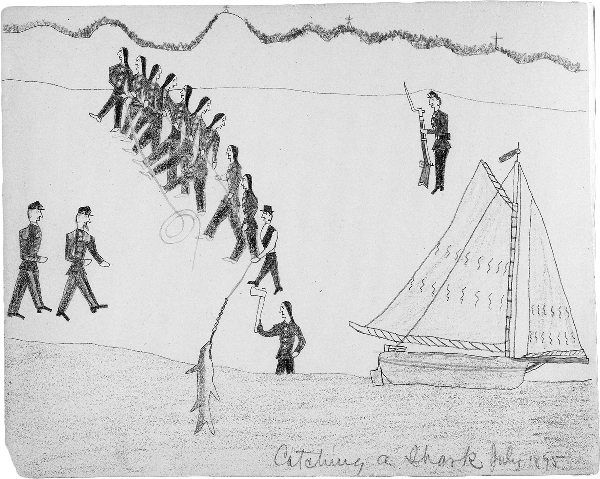
Fort Marion Prisoners and the Trauma of Native Education
Diane Glancy
University of Nebraska Press
Lincoln and London
2014 by the Board of Regents of the University of Nebraska
Acknowledgments for the use of copyrighted material appear in Acknowledgments, which constitutes an extension of the copyright page.
All rights reserved
Cover: details from Bears Heart, book of 24 crayon drawings, ca. 1875, National Museum of the American Indian, Smithsonian Institution, d206231. Cover design by Gabriel Sanchez.
Library of Congress Cataloging-in-Publication Data
Glancy, Diane.
Fort Marion prisoners and the trauma of native education / Diane Glancy.
pages cm
Summary: Narratives of Kiowa, Cheyenne, Arapaho, Comanche and Caddo prisoners taken to Ft. Marion, Florida, in 1875 interspersed with the authors own history and contemporary reflections of place and identityProvided by publisher.
Includes bibliographical references.
ISBN 978-0-8032-4967-7 (paperback: alk. paper)
ISBN 978-0-8032-5694-1 (epub)
ISBN 978-0-8032-5695-8 (mobi)
ISBN 978-0-8032-5693-4 (pdf)
1. Indians of North AmericaRelocationFloridaCastillo de San Marcos National Monument (Saint Augustine) 2. Indian prisonersFloridaCastillo de San Marcos National Monument (Saint Augustine) 3. Prisoners of warFloridaCastillo de San Marcos National Monument (Saint Augustine) 4. Indians, Treatment ofFloridaCastillo de San Marcos National Monument (Saint Augustine) 5. Indians of North AmericaEthnic identity. 6. Cherokee IndiansBiography. 7. Castillo de San Marcos National Monument (Saint Augustine, Fla.)History. I. Title.
E 98. R 4 G 53 2014
975.9'18dc23
2014012342
The publisher does not have any control over and does not assume any responsibility for author or third-party websites or their content.
They are beginning to read and write. They have learned the Lords prayer.... Here were men who had committed murder upon helpless women and children sitting like docile children at the feet of women learning to read.... It was my privilege to preach to them every Sunday, and upon week days I told them stories from the Bible...
Bishop H. B. Whipple to the New YorkDaily Tribune, March 24, 1876
From Richard Henry Pratt, Battlefield and Classroom: Four Decades with the American Indian, 18761904
Contents
Fort Marion Prisoners and the Trauma of Native Education
18751878
In 1875 at the end of the Southern Plains Indian Wars, seventy-two of the worst prisoners were taken by train from Fort Sill in Indian Territory, which later became Oklahoma, to an abandoned stone fort on the Atlantic Ocean: Fort Marion in St. Augustine, Florida.
The Indians had been defeated by the U.S. Cavalry. The buffalo had been slaughtered. A way of life was gone. After a council in the Wichita Mountains near Fort Sill, the Indians rode with a white flag to surrender.
From Fort Sill the prisoners rode shackled in wagons to Caddo, Indian Territory, some 165 miles east. Then they went by train to Sedalia, Missouri, Kansas City, and Fort Leavenworth, Kansas. After two weeks at Fort Leavenworth they traveled across Missouri to the St. Charles trestle bridge into St. Louis. From St. Louis, they went to Indianapolis, Louisville, Nashville, Chattanooga, Atlanta, and Macon. In Florida they stopped in Jacksonville, where the prisoners went by steamer and then railroad again for the last twenty-five miles to St. Augustine, where they made their way through crowds gathered in the street. Their journey had lasted from April 28 to May 21.
Crowds had gathered at every stop along the way. On May 19, 1875, the Daily Louisville Commercial reported the arrival of the train with the hardest lot of red faces that have ever plundered and murdered Western settlers on the frontier.
But at Fort Marion, Captain Richard Henry Pratt unlocked their leg irons, cut their hair, dressed them in army uniforms, gave them ledger books in which to draw, and taught them to read and write. He also invited Clark Mills to come from Washington DC to make life casts of the captives.
The prisoners wrote letters to the U.S. government for their release, which was granted in 1878, three years after their arrival at Fort Marion. Captain Pratts approach was one of the beginnings of a systematic effort to educate the Indians.
___
Some of the prisoners:
Black Horse, Comanche, his wife, Pe-ah-in, and daughter, Ah-kes
Gray Beard, Cheyenne
Lean Bear, Cheyenne
Ta-a-way-te, Comanche
Making Medicine, Cheyenne
Manimic, Cheyenne
Howling Wolf, Cheyenne
Bears Heart, Cheyenne
Toothless, Kiowa
Wolf Stomach, Kiowa
Sky Walker, Kiowa
Big Nose, Cheyenne
Dry Wood, Comanche
White Horse, Kiowa
Lone Wolf, Kiowa
Spotted Elk, Cheyenne
Heap of Birds, Cheyenne
Wohaw, Kiowa
Straightening an Arrow, Kiowa
Standing Wolf, Cheyenne
Big Moccasin, Cheyenne
Matches, Cheyenne
Hail Stone, Cheyenne
Biter or Zo-tom, Kiowa
E-tah-dle-uh, Kiowa
White Bear, Arapaho
Hu-wah-nee, Caddo
Buffalo Meat, Cheyenne
Chief Killer, Cheyenne
___
All of them had several names: Making Medicine, for instance, was also called David Pendleton Oakerhater, Oakahaton, O-kuh-ha-tuh, Noksowist, Bear Going Straight, and Sun Dancer. Good Talk, a Kiowa, was also called To-keah-hi, To-un-ke-uh, To-un-keah, To-keah, Taung-ke-i-hi, Waterman, and Paul Tounkeuh.
In the morning I hear the birds before I see them. They are early risers. I put new seed in the feeder, and they shovel through it looking for sunflower seeds or what they want. Then, when the feeder is empty, they remember the seed they tossed out and hunt for it on the ground. The different tribes come for the seedKiowa, Cheyenne, Arapaho, Comanche, Caddothose were the tribes.
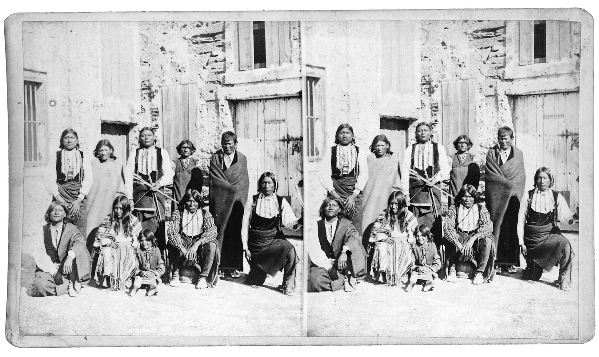
April 28, 1875, Fort Sill, Indian Territory
After the Indians surrendered, the soldiers loaded them on wagons. It was in the darkness of midnight when soldiers chained them to the sides of the wagons.
The wife and daughter of Black Horse climbed into a wagon with him. One of the soldiers saw them. He tried to remove them from the wagon but they clung to Black Horse.
The soldiers couldnt take his wife and daughter from himthere was no one to care for them. Didnt the soldiers have a wife and child?Would they leave them?
The soldiers argued.
Hide between usBlack Horse told his daughter. That soldier was going to get someone. Another soldier shouted to move aheadthe wagon jumped forwardthe other wagons followed. Black Horses wife and daughter were with himthe soldier let Black Horse have them. There was
Next page
